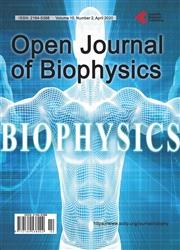Evaluation of Peppermint Leaf Flavonoids as SARS-CoV-2 Spike Receptor-Binding Domain Attachment Inhibitors to the Human ACE2 Receptor: A Molecular Docking Study
引用次数: 4
Abstract
Virtual screening is a computational technique widely used for identifying small molecules which are most likely to bind to a protein target. Here, we performed a molecular docking study to propose potential candidates to prevent the RBD/ACE2 attachment. These candidates are sixteen different flavonoids present in the peppermint leaf. Results showed that Luteolin 7-O-neohesperidoside is the peppermint flavonoid with a higher binding affinity regarding the RBD/ACE2 complex (about -9.18 Kcal/mol). On the other hand, Sakuranetin presented the lowest affinity (about -6.38 Kcal/mol). Binding affinities of the other peppermint flavonoids ranged from -6.44 Kcal/mol up to -9.05 Kcal/mol. The binding site surface analysis showed pocket-like regions on the RBD/ACE2 complex that yield several interactions (mostly hydrogen bonds) between the flavonoid and the amino acid residues of the proteins. This study can open channels for the understanding of the roles of flavonoids against COVID-19 infection.薄荷叶总黄酮作为SARS-CoV-2刺突受体结合域对人ACE2受体的附着抑制剂的评价:分子对接研究
虚拟筛选是一种广泛用于识别最有可能与蛋白质靶标结合的小分子的计算技术。在这里,我们进行了一项分子对接研究,以提出防止RBD/ACE2附着的潜在候选者。这些候选者是存在于薄荷叶中的十六种不同的黄酮类化合物。结果表明,木犀草素7-O-新橙皮苷是对RBD/ACE2复合物具有较高结合亲和力(约-9.18Kcal/mol)的薄荷类黄酮。另一方面,Sakuranetin表现出最低的亲和力(约-6.38kcal/mol)。其他薄荷类黄酮的结合亲和力范围从-6.44千卡/摩尔到-9.05千卡/mol。结合位点表面分析显示,RBD/ACE2复合物上的口袋状区域在类黄酮和蛋白质的氨基酸残基之间产生了几种相互作用(主要是氢键)。这项研究可以为了解黄酮类化合物对新冠肺炎感染的作用开辟渠道。
本文章由计算机程序翻译,如有差异,请以英文原文为准。
求助全文
约1分钟内获得全文
求助全文

 求助内容:
求助内容: 应助结果提醒方式:
应助结果提醒方式:


